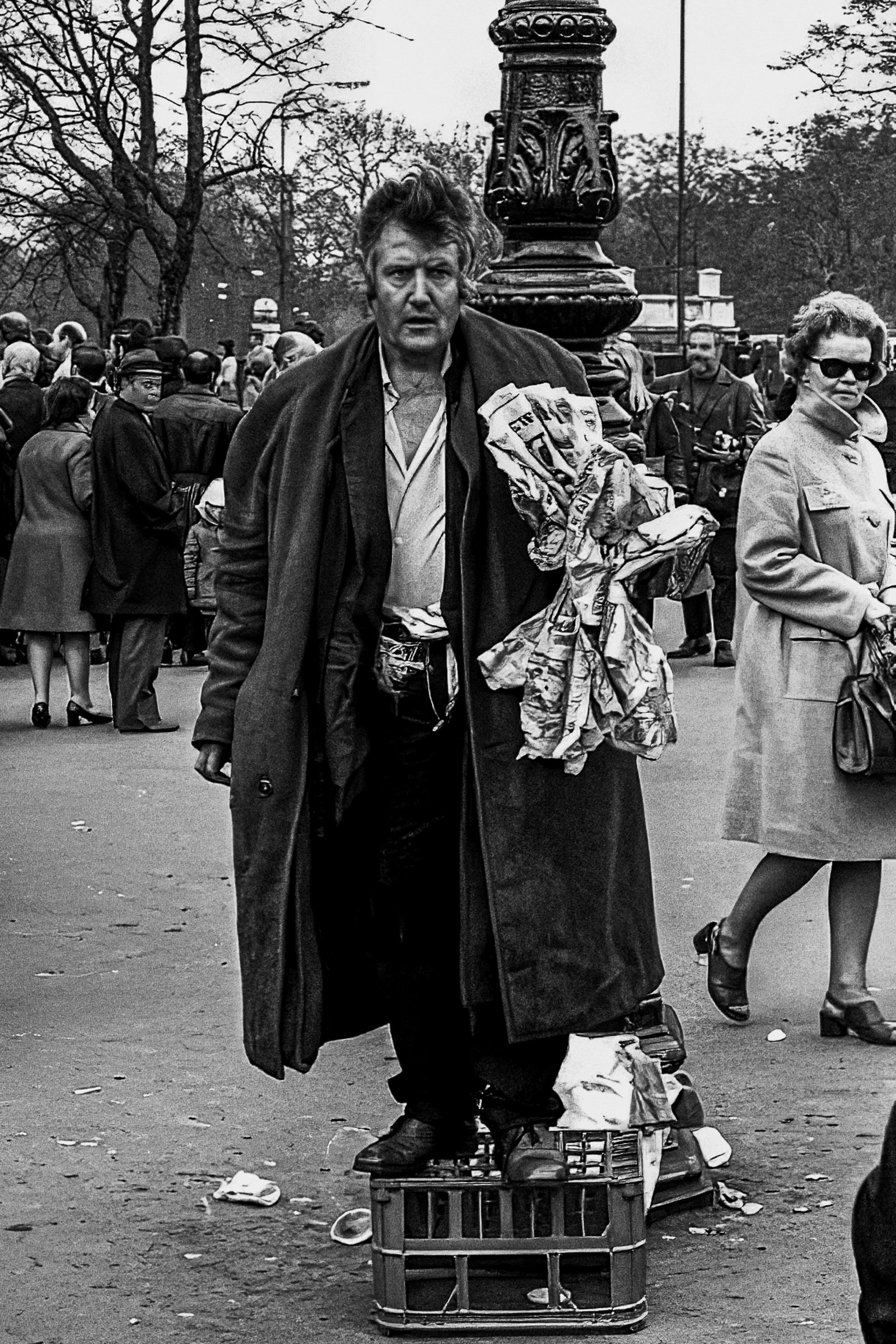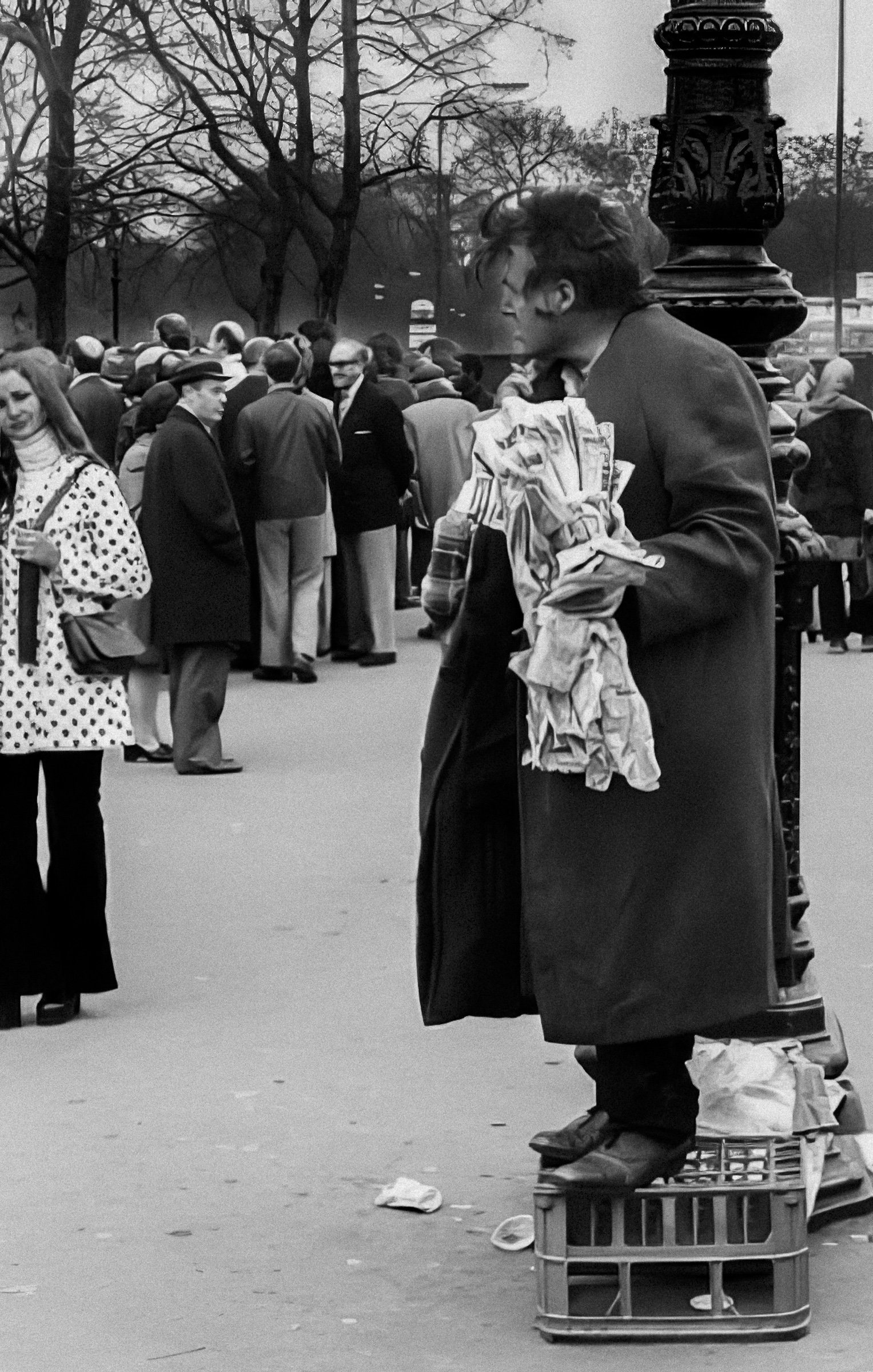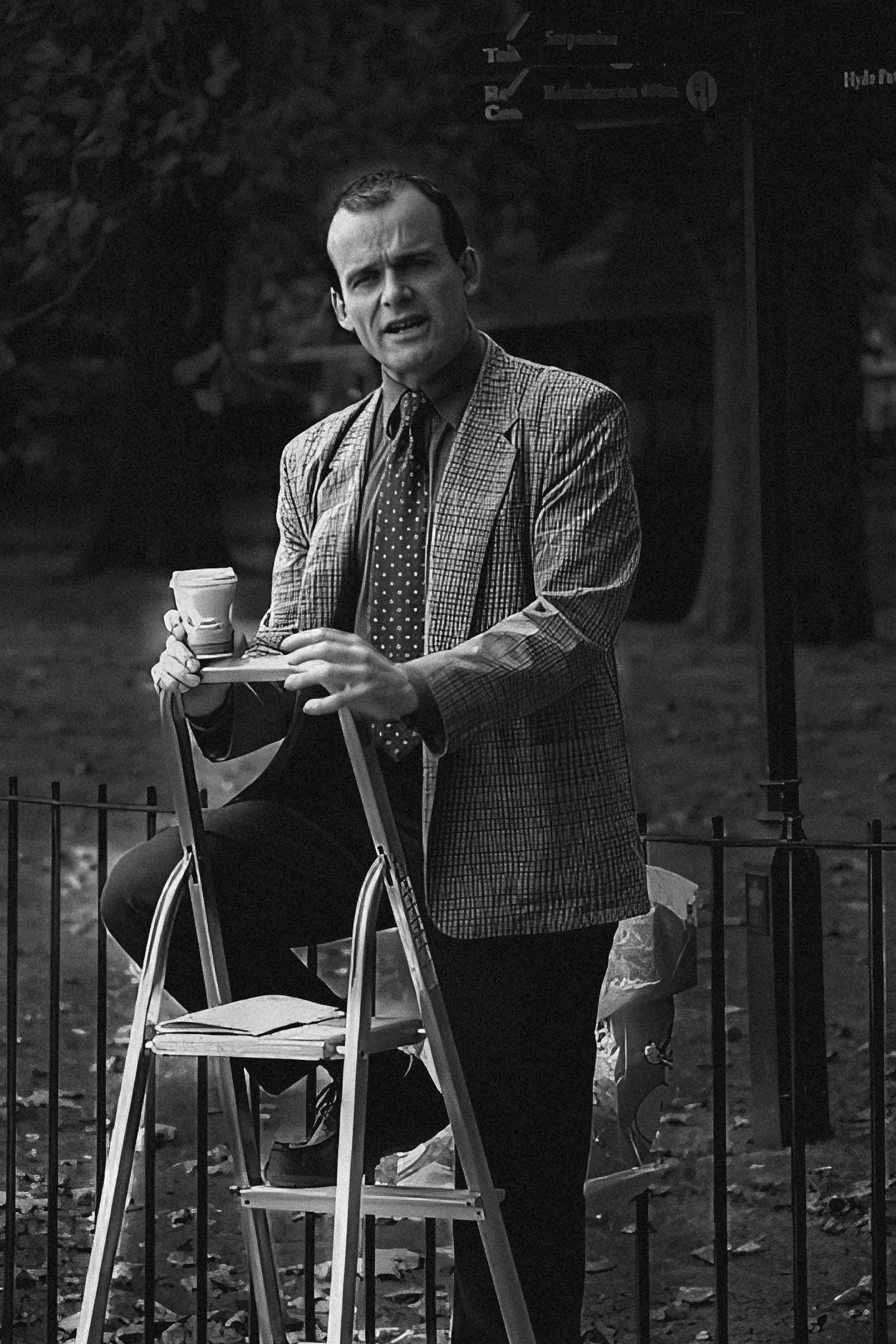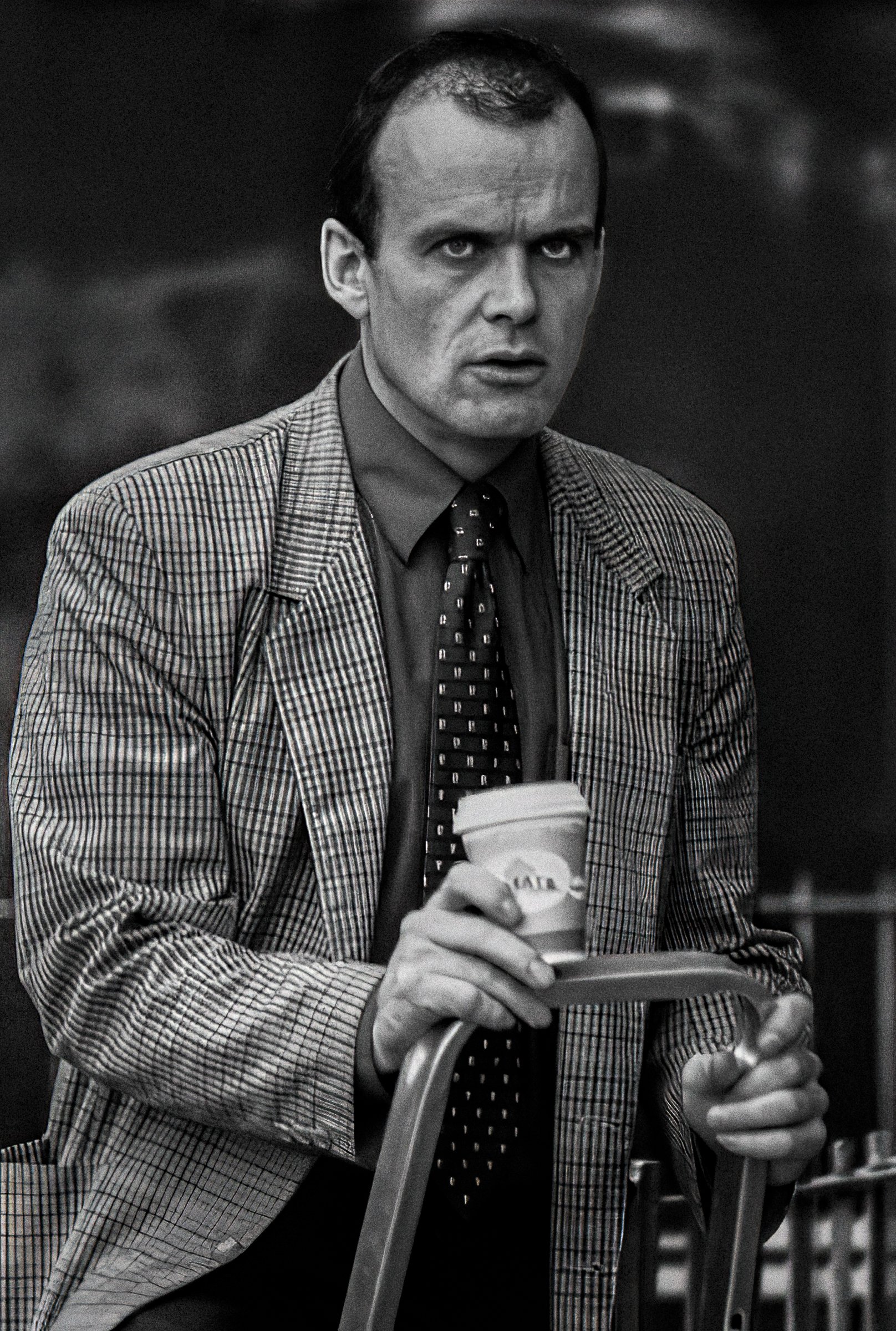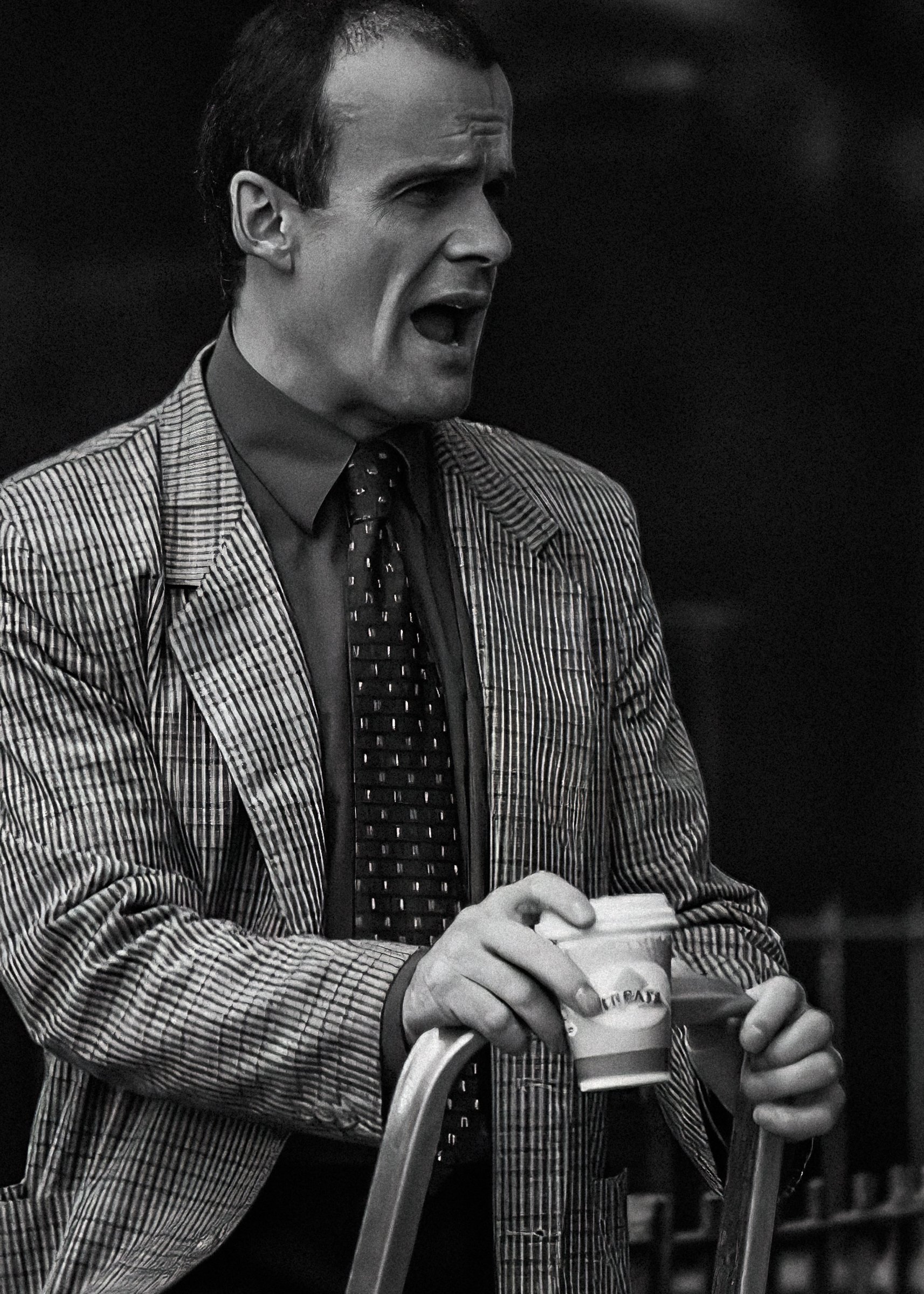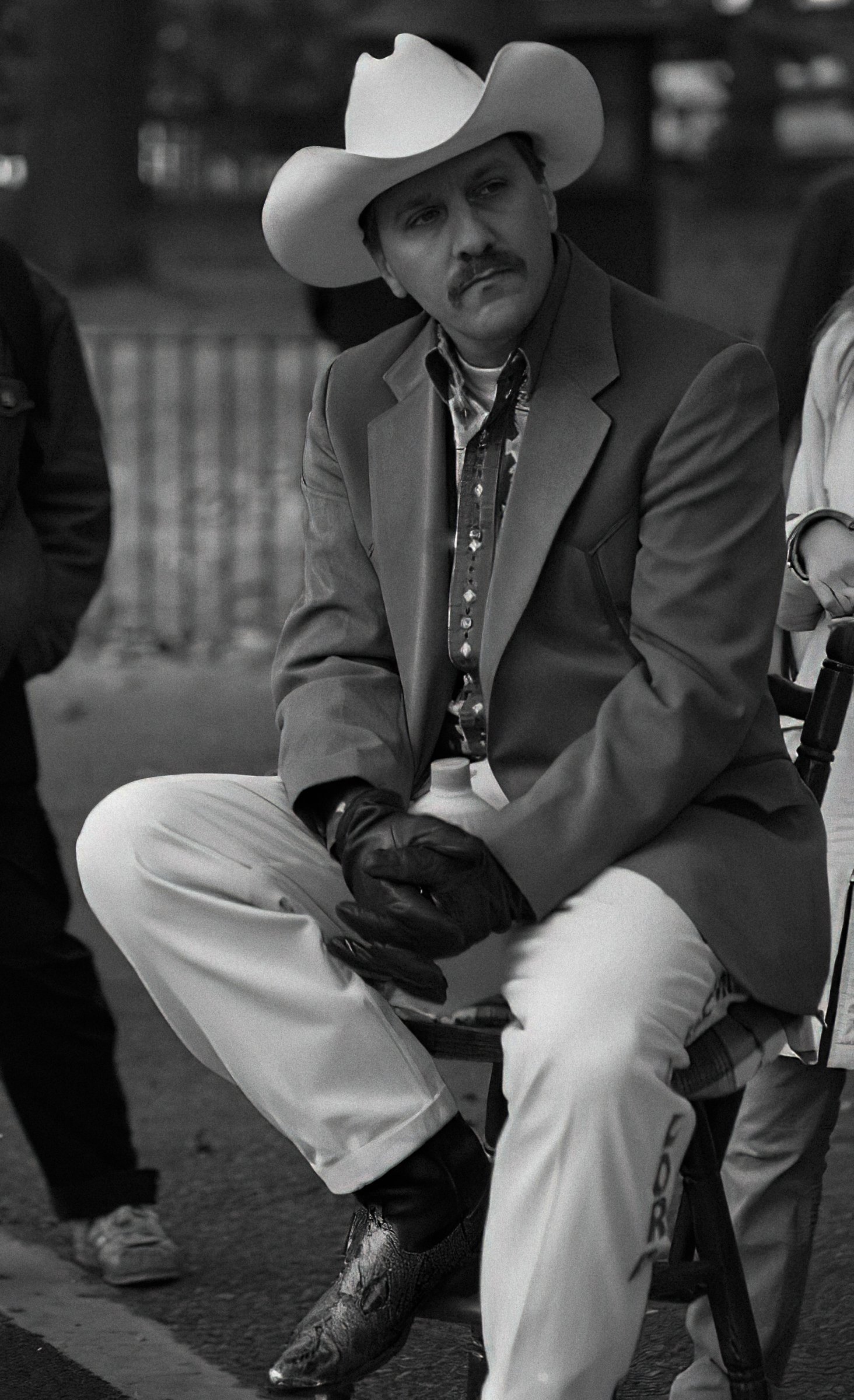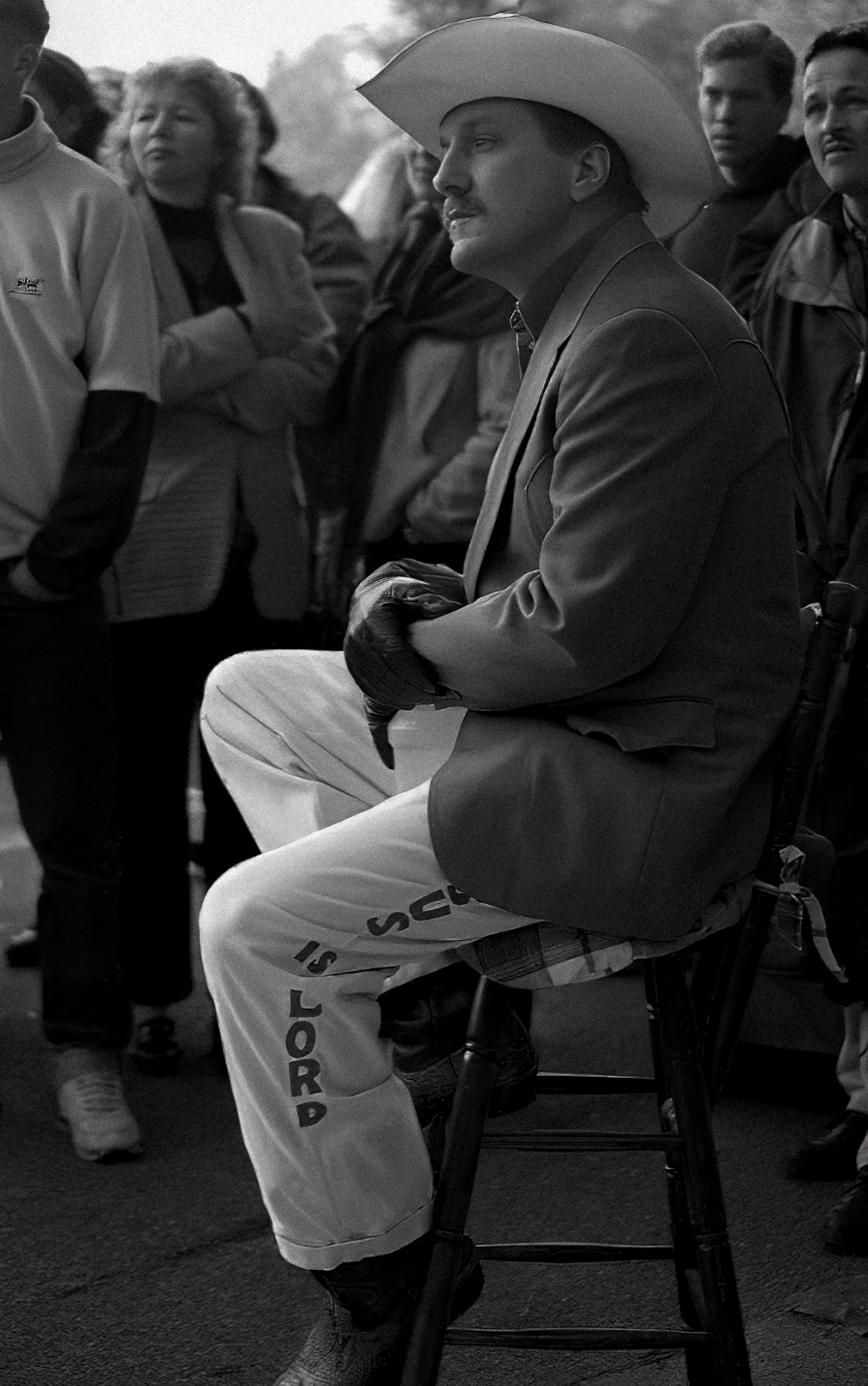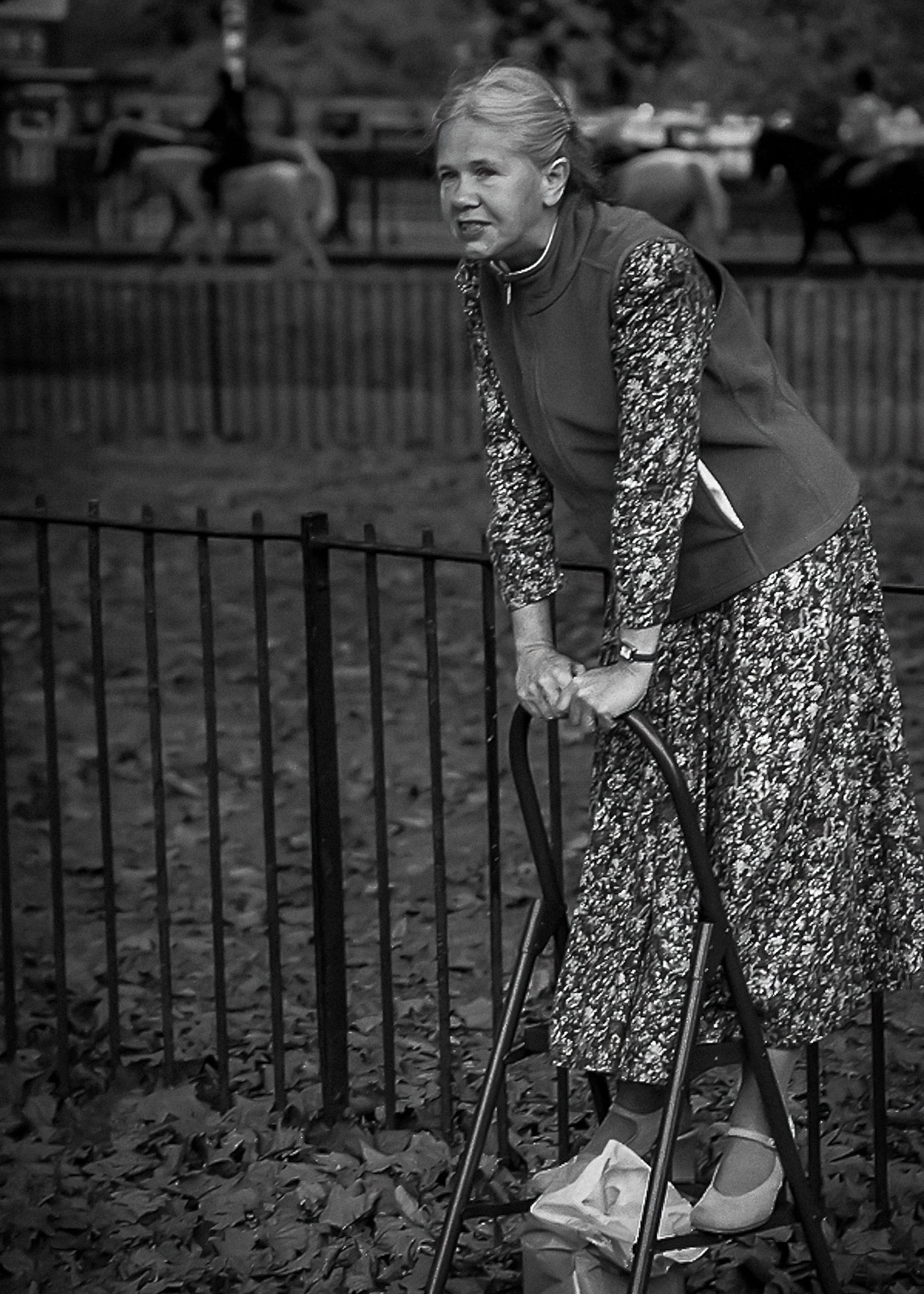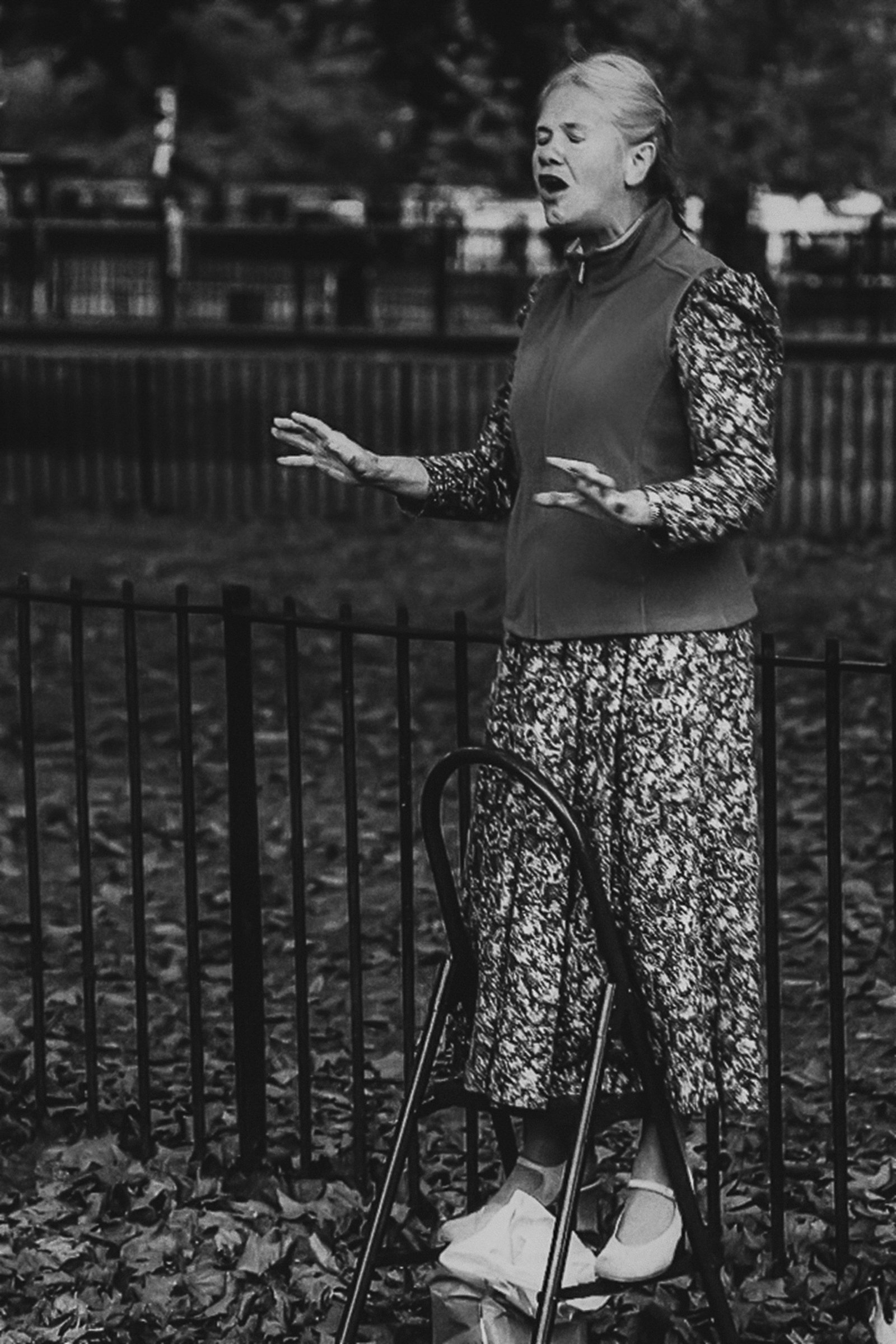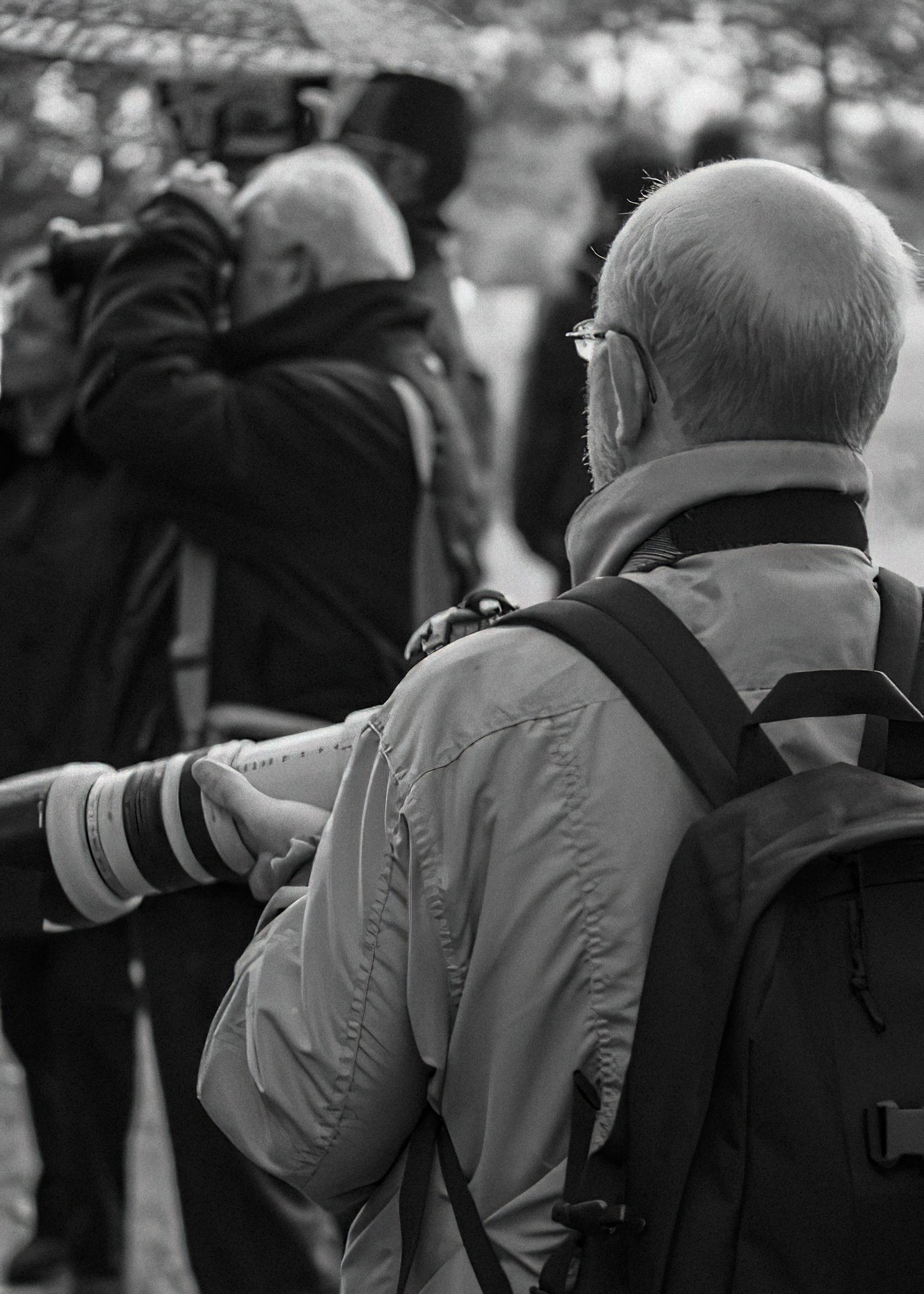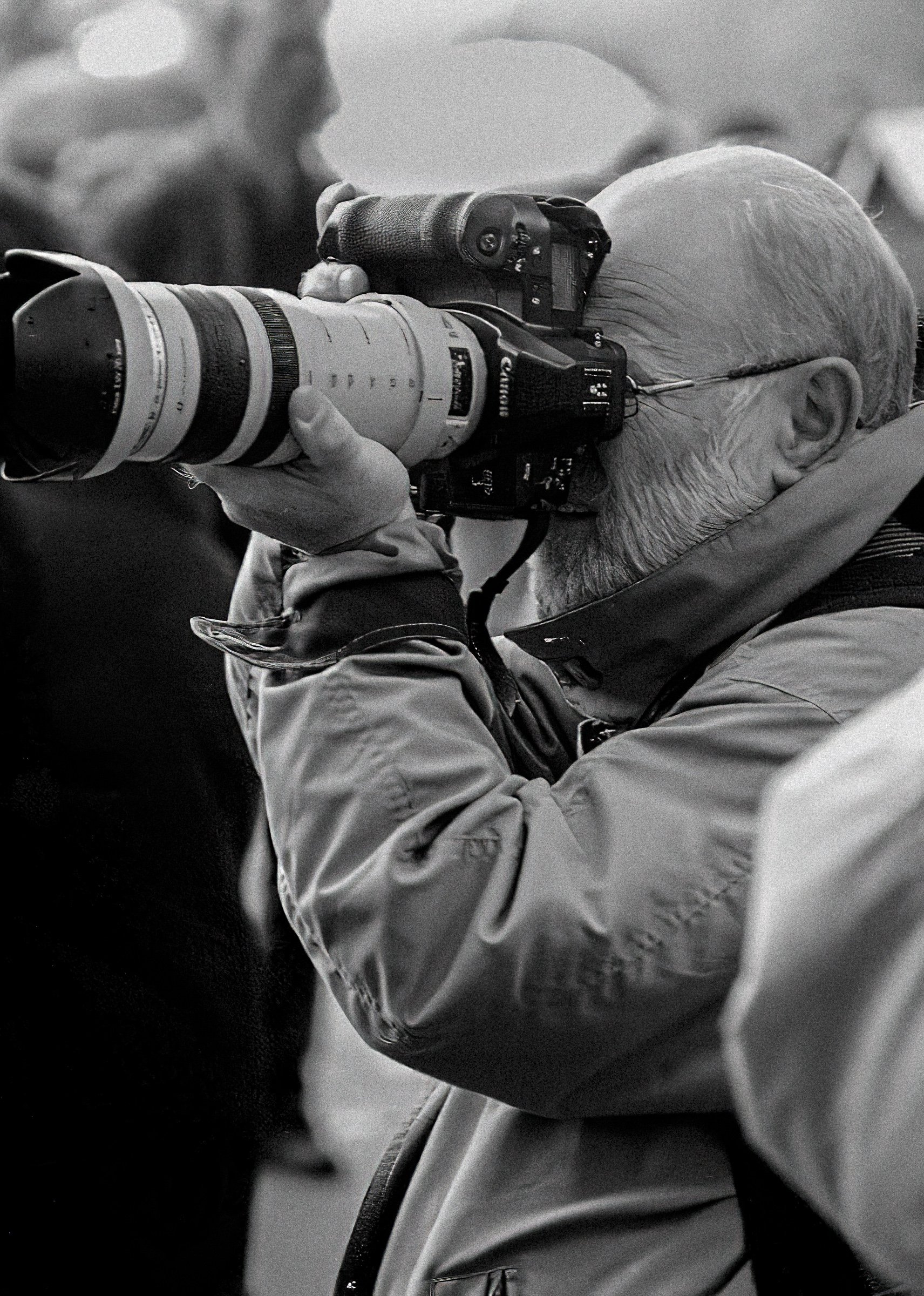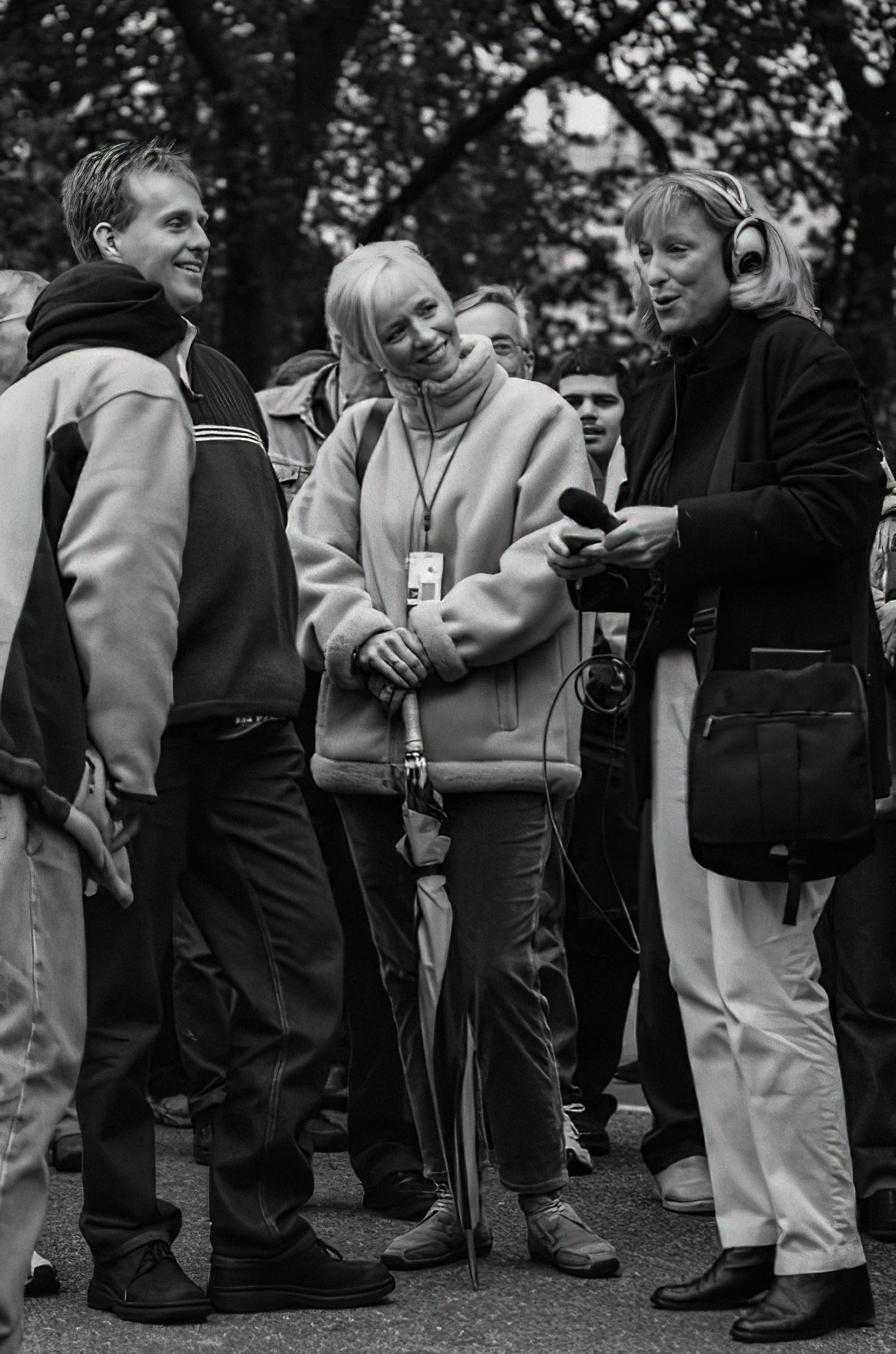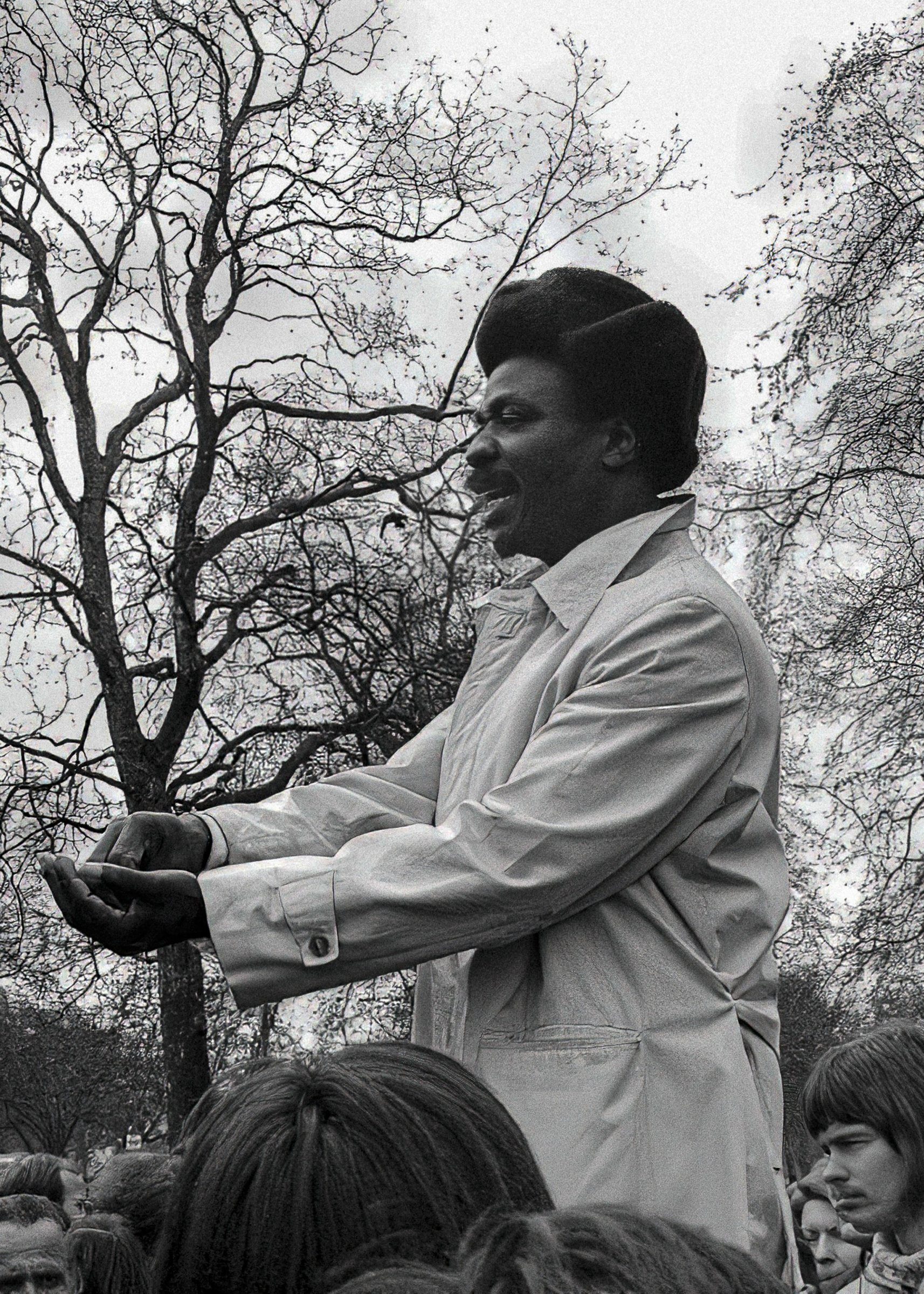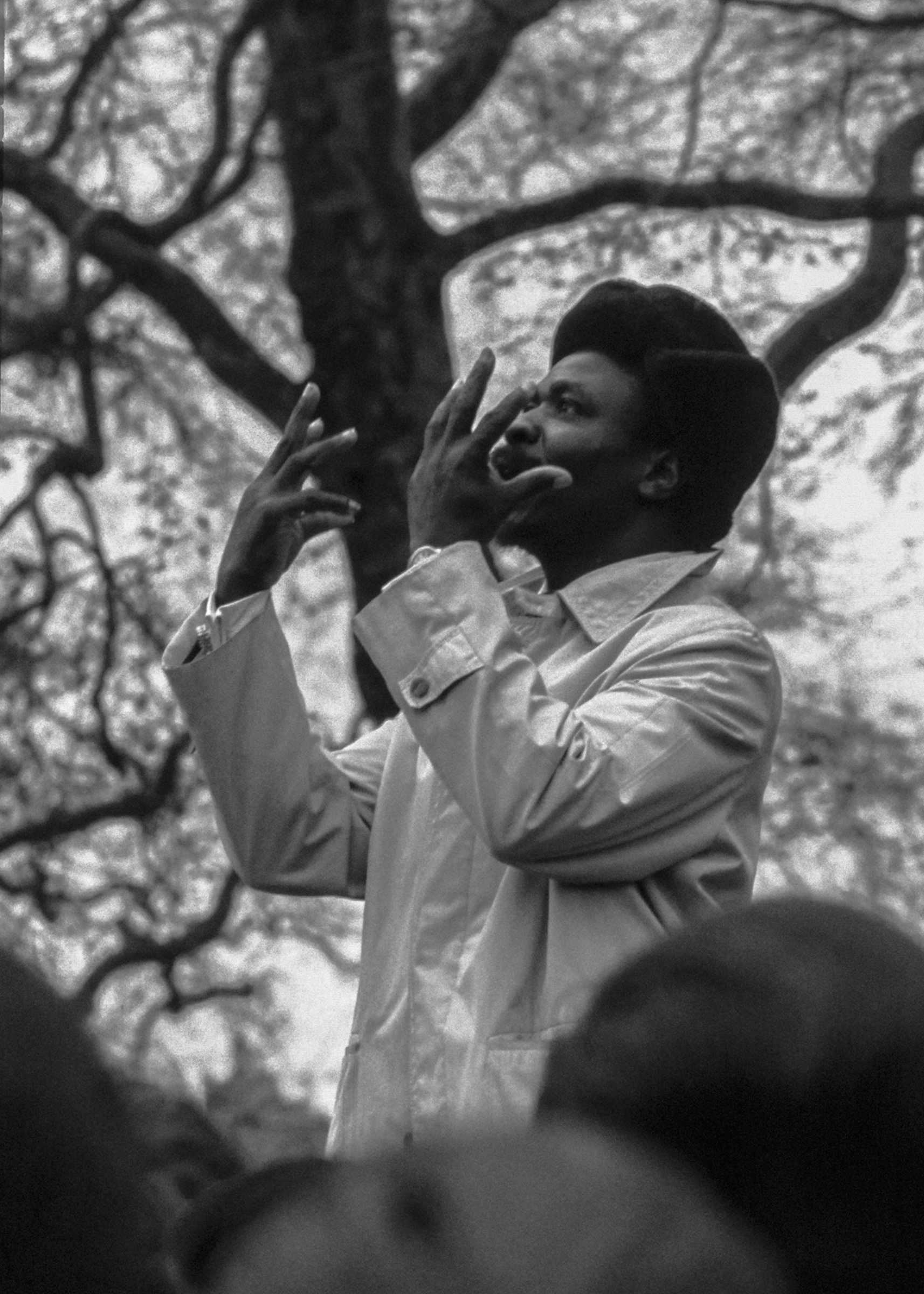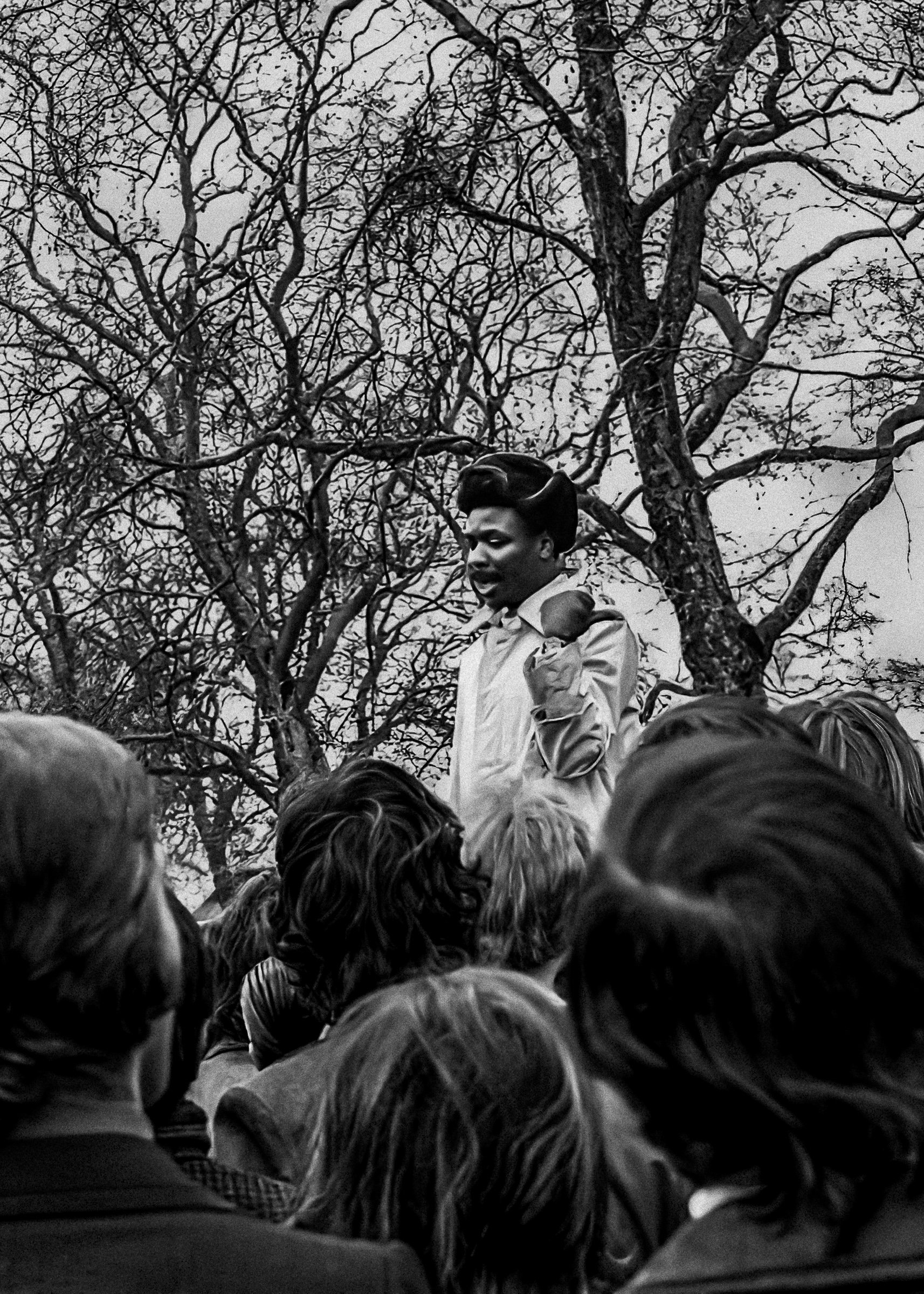Hyde Park Sunday
by Sey Rosen
During my 55+ years of dabbling in Photography and shooting in both Analogue and Digital, I have concluded that I still am a great fan of ‘old school’ Analogue photography. Thus I find myself, more often than not, grabbing my Nikon F100 & a roll or two of film, rather than the D750 when I go out to shoot. There are many reasons for this decision, mainly technical, which lead to aesthetic differences between the techniques.
Suffice it to say that because of the totally different technologies the images created by both are totally different. The main difference being between FILM GRAIN and DIGITAL NOISE (GRAIN), without going into a deep technical explanation, which is a huge subject in itself, let’s just understand that Analogue is a chemical process whereby the light reacts with different light-collecting materials coated on the film, whilst allowing for the gentle changes in tone mood and texture, as well as covering the whole frame so as to bring the composition together. There are an abundance of films that produce different strengths of grain from the finest to the grittiest.
Digital is a totally electronic system. Digital cameras are basically tiny computers programmed by technicians and no two Digital cameras produce the same results. The Digital pixel is usually composed of 3 square layers sandwiched one on top of the other. Each layer is sensitive to one of the three colours, Red, Green, Blue and then the computer organizes the tones and colour values, according to the algorithms and mathematics programmed in by the engineers, thus the colours produced by the camera are dependent on the engineer’s colour perception.
Today, with the advent of all the new hardware & software available as well as the explosion of the Internet and the ‘new’ way of displaying images, I’ve adapted myself to a hybrid workflow of scanning my negatives + slides and lightly retouching them on my computer. I also, because of the untold differences in monitors/screens that we use to view the vast majority of our images today, I prepare my images differently, those for screen viewing and those that will be printed. For screens 72 ppi is very good but for printing 300 dpi or higher is required depending on the size of the print to be made.
I never plan projects, as I am Candid People photographer, instinctive and spontaneous, but I do have my favourite places to shoot e.g. The Jerusalem Mahane Yehuda Market or Zion Square/Ben Yehuda Pedestrian Mall, Jerusalem, The Tel Aviv Artist's Market, etc. Because I make so many images in these areas, they automatically turn themselves into projects. The only planning I ever do is to go out and make images whenever/wherever takes my fancy. The projects start when sorting the images.
One of my long term 'projects' which lasted over +/-40 years and included about 16 trips to London specifically to see exhibitions and photograph, was to photograph the people of Hyde Park Sundays. It never was my intention to do ‘a project’ but since my first visit to London in 1970, it simply grew itself, (un)intentionally. For me this is the Mecca or Holy Grail for Candid People Photographers, the observation and recording of the actions, reactions, interactions of both speakers and their audiences, I don’t believe can be found anywhere else in the world.
Being The High Court of Freedom of Speech, there are no subjects that are taboo. From Religion, Politics, Sexuality or any other subject that may cause one to feel the need to vent one’s spleen. Anyone and everyone is entitled to say their piece and are either applauded or heckled vigorously. Whether it’s an Evangelist preaching The Wrath of God, or the armchair politician bemoaning the ruling party and the state of the nation, or the dark complexioned gentleman explaining in great detail to the embarrassed paler locals why their ladies prefer the darker complexioned fellows.
To me, having been, since early childhood inquisitive and nosey, I always was and still am fascinated by the Human Race, so “Speaker's Corner” is the diamond in the crown of “The Greatest Show on Earth”.
I’m Sey Rosen, a retired Industrial Designer and Interior Architect, but remain an active passionate Photographer. Since my early childhood, I’ve always been ”fascinated by the human race”. People and their behaviour always intrigued me. I would sit for hours simply watching people going about their daily life at work, at play, at rest, at prayer. Their actions, reactions, interactions, idiosyncrasies, expressions, to me has always been intriguing. This ‘people curiosity’ was invaluable in my Design research.
As a Design Student (1966-1971), one of the courses was Photography and like the majority of my Photographic contemporaries, the minute I walked into a darkroom I was seduced by the stringent acetic acid ‘aroma’ of the fixer, the romantic red light and the real magic of the image appearing on a blank sheet of white paper. My passionate love affair with Photography had begun. I had found the outlet for my “people fascination”, but this wasn’t a conscious thought process, it was the natural merging of my two passions that was never consciously made. It was something that I just did, long before Nike told me to. I only started thinking about the ‘what/why’ a few years ago, when I had to prepare a brief resume of my Photographic history.
.
I consider myself as a “People” photographer and thus my portfolio consists of people and not only the In-Public Street. I shoot Fine Art Glamour/Nude in the studio, Live Dance performances, Portraits, and of course, my grandsons. An image without a human in it does not excite me, no matter how good it is. I greatly admire the work and skill of Ansel Adams, Charlie Waite, the National Geographic and all other great landscape and nature Photography, but the images don’t light my fire.
My technique is the same and has grown with me, no matter which genre I happen to be shooting. I'm an instinctive, spontaneous, available light, hand-held candid photographer. In the studio I let the model do her own thing, I never adjust the lighting and never direct. When shooting a live dance performance, these limitations are a given, so that's it. I don't own a tripod and my monopod is lost somewhere in the closet. I shoot both film and digital in equal amounts. My curent cameras are Nikon F100, Nikon D750 and Nikon Coolpix P7000. I have a smallish assortment of Nikkor lenses and today when I go out to shoot, it's just me, camera and 1 lens. The days of schlepping a bulging camera bag containing 2 SLR bodies, a load of film, and 3 prime lenses are long past. I hate being distracted from my concentration on the subject by equipment decisions. I never use a flash. My preferred film for b/w is Ilford, as are the chemicals and paper. The colour slides are Kodak Ektachrome, professionally processed. My negatives/slides are scanned on my Epson Perfection V700 flat-bed scanner and from there go into my Adobe Lightroom with it's specialised plug-ins from DxO, NIK, OnOne and Topaz. My workflow is camera > film(scanner)/memory card > editing software.
My Photo-Guru from the start has been the late Sam Haskins (1926-2008). Of 'Cowboy Kate', 'Five Girls', 'November Girl', 'Haskins Photographics', ‘African Image’, etc., fame. I was lucky enough to meet and be able to discuss his work with him, which, from the early 1960ies, he was doing in-camera and with darkroom editing, that which expert Photoshoppers are trying to do today. My other influences over the years are, obviously, the long list of Photo-Journalists, Documentary Photographers, Street Photographers, Portraitists, etc., A list of "People" photographers that is too long to mention each by name, and includes many 'new' Photographers who are now coming to the fore. The list also includes Artists of all sorts. The truth is I learn, to this day, from every image I see, no matter who the photographer/artist is. The Photographers I would like to spend the day with are again many, but Sam Haskins, Henri Cartier-Bresson, James Nachtwey top the list. I don't think I would shoot much, I'd be simply gawking in awe watching them work.
My goal is to broadcast visually my emotions, my feelings, heart and soul, of the split second, of 'the moment'. 'The moment' cannot be verbalised sufficiently, because it has passed and will never be repeated, but when recorded on an image and successfully translated visually, it is there for at least 100 years or more. 'The Moment', for me, can never be planned for, it suddenly is there and needs to be instinctively recorded. That to me is the making of a strong image which, I hope, speaks to the viewer and causes a moment of reflection, empathy/antipathy, a smile, a tear of joy or sadness. An image that the viewer can relate to. To achieve that goal, I need to be able to mingle freely with confidence, respect, and humility to be accepted by my quarry, so I'm never aggressive in my approach. The Jerusalem Mahane-Yehuda market is one of my favourite places to shoot. In the beginning, it wasn’t easy in the hostile environment of the ‘anti-photo’ vendors, so my first few visits were a ‘getting to know each other’ experience with my camera slung around my neck, but not shooting. By the third visit, as I walked through the entrance, the first vendor cried out in his deep baritone ‘town crier’s’ voice, “everybody tremble with fear, the photographer is here!” and that’s when I knew that I was able to start photographing freely, accepted as part of the scenery, and most importantly ironically unnoticed.
If I had to start photography again, I would go exactly the same route that I have from the start. A very good grounding in History of Art and Photography. An even deeper grounding in all the processes of photography, the tools and all the ABC, without which one cannot learn to read. Most importantly, I keep on learning. I have no problem in sharing my knowledge and experience with those who ask for it.








